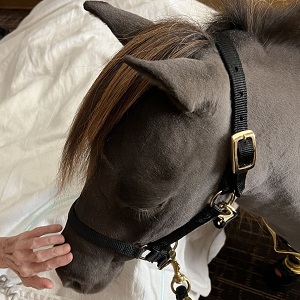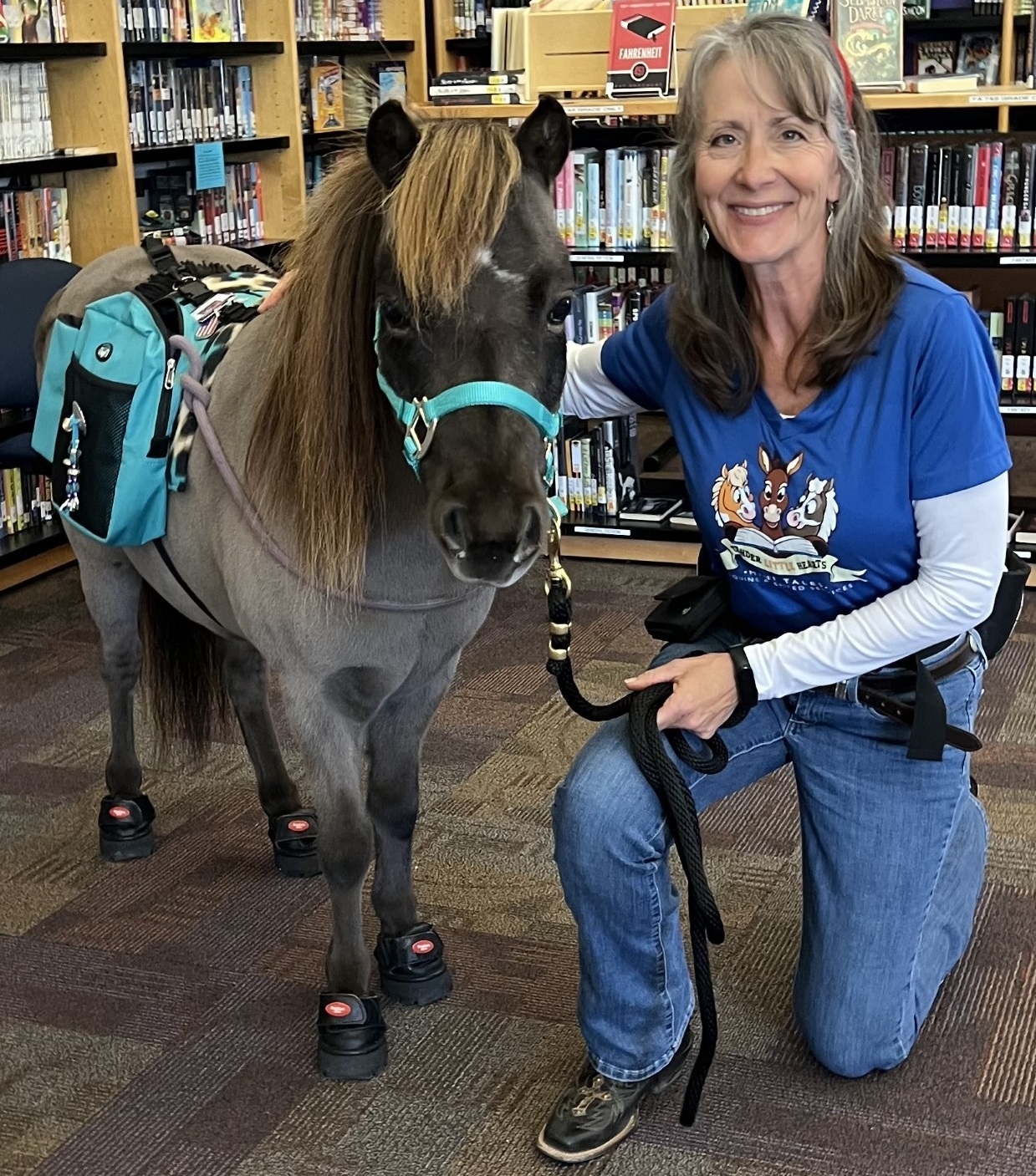Baron
A miniature horse can have a large impact.
The patient might be a teenager with mental health issues, a retired circus rider on hospice, or a farmer on a memory care unit, but there is a therapist who can connect with them all. He weighs 250 pounds, stands 36 inches tall, and is nine years old.
His name is Baron (named after the Red Baron of Peanuts' fame). Together with his well-trained human, Cindy Forrer, Baron is a certified member of METSA, the Miniature Equine Therapy Standards Association, with extra qualification as a hospice horse. (Therapy animals are different from service animals. For more on the latter, see our Q&A, "Service Animals in the Hospital.")

It might seem a bit out of the ordinary to see a horse in a health care facility, but he fits right in. Baron easily gets around in a minivan (in the back—he currently does not possess a driver's license) and is not too heavy to ride in an elevator. When in the hospital, he has to wear special rubber shoes to protect the floors and minimize noise, but he is not opposed to cosplay (he has been known to dress as Batman on occasion).
He is trained in personal equine hygiene issues (in other words, he won't be leaving any droppings in the hospital hallways) and is recertified biannually on his ability to remain unfazed by loud noises and medical equipment like wheelchairs and walkers, and in general to be a calm and quiet little ungulate. As a bonus, before every hospital visit, he gets a full bath and pedicure.

Baron has made over 120 visits and interacted with thousands of people in Minnesota and Arizona, his two bases of operation. Cindy, his handler and financial support (Baron will work anywhere for a handful of Honey Nut Cheerios, she notes), is a retired pharmacist. She and Baron met when she volunteered at a miniature horse rescue, and now they go all over together—schools, libraries, Boys & Girls Clubs, orphanages, foster homes, charitable events, and hospice and long-term care facilities, as well as hospitals.
As one would expect, children react with excitement to both his diminutive stature and the thought of a horse inside their school. But it's in the hospital and hospice where he seems to have the most profound impact. There is no shortage of retired farmers in Minnesota, and Cindy tells many stories of patients who haven't interacted with other humans in weeks smiling and petting Baron and of patients with dementia engaging him in deep debates over topics known only to the two of them. Baron will happily stand in a patient's room while they both watch a rerun of his favorite show, Gunsmoke.
With hospice patients, Baron may provide comfort by simply laying his muzzle on the bed so they can look into each other's eyes. He seems to sense the nature of the situation, a person's frailty and need for connection.
We say that in medicine, when you hear hoofbeats, think horses not zebras. But, sometimes when you hear hoofbeats in the hospital, it might just be Baron coming to see one of your patients.



